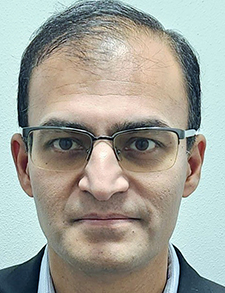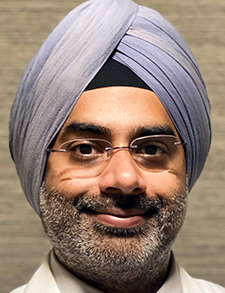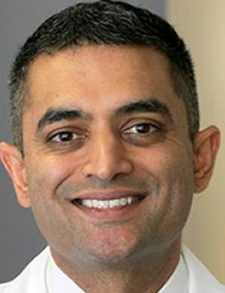 Hospitalists are uniquely positioned to drive quality-improvement (QI) initiatives across the health care continuum. Our daily interactions span diverse health care teams and specialties. Our care plans exert considerable influence on clinical outcomes, institutional performance metrics, financial outcomes, and patient-safety ratings. Though our role should facilitate engagement, patient care responsibilities can often overburden us, deterring involvement in quality improvement projects.
Hospitalists are uniquely positioned to drive quality-improvement (QI) initiatives across the health care continuum. Our daily interactions span diverse health care teams and specialties. Our care plans exert considerable influence on clinical outcomes, institutional performance metrics, financial outcomes, and patient-safety ratings. Though our role should facilitate engagement, patient care responsibilities can often overburden us, deterring involvement in quality improvement projects.
In this article, we highlight common challenges preventing hospitalists from pursuing quality improvement projects, or QIPs. More importantly, we provide practical strategies to overcome these barriers. Through these shared insights, we aim to empower hospitalists to use their expertise in shaping health care quality.
1. Imposter syndrome is real!
Start by knowing that this feeling is common and many experts you know and respect have felt this at all stages of their career. Don’t bury this thought: talk about it, journal it, and avoid the silence. No one is an expert in quality improvement or patient safety when they start. Setting small and realistic expectations early on will help get you over the hump to realizing what you have already learned. Focus on the process rather than the outcome. Failure doesn’t equal imposter. If you have an educational gap, find out what the QI/PS language is at your institution and find small training opportunities and ways to get a little expertise. There may be free courses at your institution you can take advantage of or resources through SHM (Converge pre-course, webinars, special interest groups, committees).
2. Values
What is your reason for doing QI? And for this project in particular? Adverse events, publication, promotion, or being “voluntold” are all reasons for doing QI that we’ve experienced. Just as we all came to medicine for our own reasons, we all came to QI based on our own personal values. But knowing why you are taking the time and putting in your effort to learn QI and work on the particular project helps create a story not only for yourself but for those around you. Understanding the “why” of your teammates gives you insight into the best way to demonstrate change and convince your team of success. Being able to state your values driving this work and the values of those around you motivates you and your team to this goal and beyond.
3. Alignment
Try to align your project goals with the long-term goals and objectives of the organization, such as hospital ratings and quality-based reimbursement programs. This will help with getting buy-in from the C-suite and administrative leadership and in obtaining the resources and/or personnel for the project. Aligning goals with the language and priorities of frontline caregivers, not only in hospital medicine but also in pharmacy, therapy, nursing, or social work, will create a sense of urgency to engage with your project as well. In the words of John Kotter, “Establishing a sense of urgency is crucial in gaining needed cooperation.”1 One way to achieve this is by using eye-catching visual aids like videos or graphics. This will ultimately also aid the process of change management needed to implement the project.
4. Size
Start with one project, and one project only. Make it small, even smaller, smallest! New QI enthusiasts want to save the world, and so do we, but QI experts recommend biting off chunks that you can chew. Smaller projects mean proving the possibility of success on a smaller scale, and it also means less time (see #7), fewer data to manage (see #5), fewer personalities to manage, and similar opportunities to scale up if your projects work. If you can’t make a project work on a small scale, it is not going to work on a large scale, so save yourself the effort and start small—one unit, one provider, or even one patient is an appropriate scale to start making changes.
5. Data
Data are essential in any QI project to help understand the current state and monitor changes for the future state. Ask about data availability before you commit yourself to a project. Without data, QI is going to be hard! But there are also no perfect data. Where there is a paucity of readily available data, manual collection pre- and post-intervention can help demonstrate proof-of-concept or POC. This proof-of-concept and outcomes data may then be leveraged to market the project idea to the C-suite and the frontline. Data can help to prioritize goals and allocate resources. It is also important to set measurable targets and goals, based on the health system’s strategic goals. IT and operations support could be used to develop real-time dashboards to get actionable insights throughout the project. These are also useful while sharing and presenting to a wider audience.
6. Team
Recognizing that projects extend beyond a single hospitalist, building a team will ensure your project’s sustainability and lead you one step closer to success. Central to team building is the identification of interested parties—individuals who have a vested interest in your project’s outcomes. They come from various backgrounds and can include frontline staff, administrators, and even community members. And don’t forget to make friends wherever you go in the hospital—everyone wants to help their friends out!
Identifying other participants can be challenging. While clinical staff may be most obvious, reaching out to those in influential roles such as medical directors and division chiefs may also yield helpful insight. Process mapping can shed light on key players affected by your project that may not be top of mind. Building a diverse team that is invested in your project will provide you with the perspectives, buy-in, and resources needed for an effective and sustainable project.
7. Time and effort
Expect to put in some time up front when you’re learning a new skill. Keep a time log of how much effort you put in so that you can quantify effort when the time comes to ask. Smaller projects mean less time and also fewer data. Finishing a project with a completed storyline is more important than the number of projects or committees you’re on. This strategy can increase your chances of getting protected time (research time, administrative time) in the future. Make it count more than once: present it locally and at national conferences, and based on your responsibilities, you can make your project a win in multiple contexts (in your role as unit director, administrator, or quality expert).
8. Effective communication
Effective communication will foster collaboration throughout the lifecycle of your project. It is essential to initiate communication at the start of your project to seek input and establish an open line of communication with your team—this will provide you with continuous feedback and will also establish rapport between team members to ensure their sustained investment.
Tailoring communication to each individual and the role they play in your project is crucial. You must understand what motivates each interested party and address their concerns in a way that aligns with their interests and values. Consider examples such as presenting efficiencies in workflows to your C-suite, throughput metrics to a medical director, and patient stories to frontline staff. Acknowledging the individual impact of your project’s intervention on each person will ensure your team remains engaged.
9. Failure is normal
Failure in the world of QI is a large part of the journey to success. Every project has the potential to fail, particularly early in your career. The quicker you fail early when the stakes are lower, the higher the chances of succeeding when the project is in front of a larger audience. In fact, the more you fail, especially early on in the project, the more you and your team learn. The faster you recognize your failure, the less time and fewer resources you have wasted. As per the Institute for Healthcare Improvement, the expectation is that 15% of projects fail; fewer failures are an indication that your team isn’t taking enough leaps.2 Failure is an opportunity to identify gaps, develop new processes, search for mentors, and expand your network to increase the chances of success for the next project or change cycle. Let failures be on your path to success rather than letting failures stop you from success. And celebrate the small wins because you won’t always have wins.
10. Future goals and opportunities
There is a wide scope of opportunities in QI at different levels from beginner to expert, educator, champion, and leader. As in research, opportunities abound, from running projects to teaching and mentoring others through projects to setting system-wide QI priorities. There are as many job titles as there are QI professionals, e.g., chief quality officer or CQO, departmental (or divisional) quality chair or director, medical quality director for a residency program, and chair for a quality committee. We have held many of these roles, some even when we were just starting. And, of course, so many hospitalists practice QI daily without a specific title, because this has become a part of our job! Leveraging your QI expertise to a new title might even be available to you today.
Conclusion
As hospitalists, we possess distinct advantages in driving QI initiatives in healthcare. Our influence extends beyond individual patient care and can shape the broader landscape of healthcare quality. To face the challenges of engaging in QI, this article has aimed to equip readers with practical strategies to overcome common barriers in QI work. From navigating imposter syndrome to harnessing the power of data and effective communication, we hope each insight has paved the way for you to achieve transformative change at your own institutions.

Dr. Faria

Dr. Prasad

Dr. Gambhir

Dr. Baron

Dr. Dungarani
Dr. Faria is a hospitalist and co-director of inpatient quality at Long Island Jewish Medical Center in New Hyde Park, N.Y., and an assistant professor of medicine at the Donald and Barbara Zucker School of Medicine at Hofstra/Northwell in Hempstead, N.Y. Dr. Prasad is a hospitalist, informaticist, and medical director of care management at Advocate Health, and associate professor (adjunct) at the University of Wisconsin, both in Milwaukee, Wis. Dr. Gambhir is a hospitalist, vice chair for quality improvement and patient safety for the department of medicine, and associate professor, associate chief of quality for division of hospital medicine, and associate program director for internal medicine residency program, at SUNY Upstate Medical University, in Syracuse, N.Y. Dr. Baron is a hospitalist, associate professor, and director of inpatient quality improvement at Montefiore Medical Center/Albert Einstein College of Medicine in New York. Dr. Dungarani is a clinical informaticist at MDClone and a hospitalist at Emory Healthcare in Atlanta.
References
- Kotter, JP. Leading change: Why transformation efforts fail. Harvard Business Review website. https://hbr.org/2007/01/leading-change-why-transformation-efforts-fail. Originally published in magazine, January 2007. Accessed February 26, 2024.
- Martin LA, Mate K. IHI white paper: IHI innovation system. Institute for Healthcare Improvement website. https://www.ihi.org/sites/default/files/2023-10/IHIInnovationSystemWhitePaper.pdf. Published 2018. Accessed February 26, 2024.